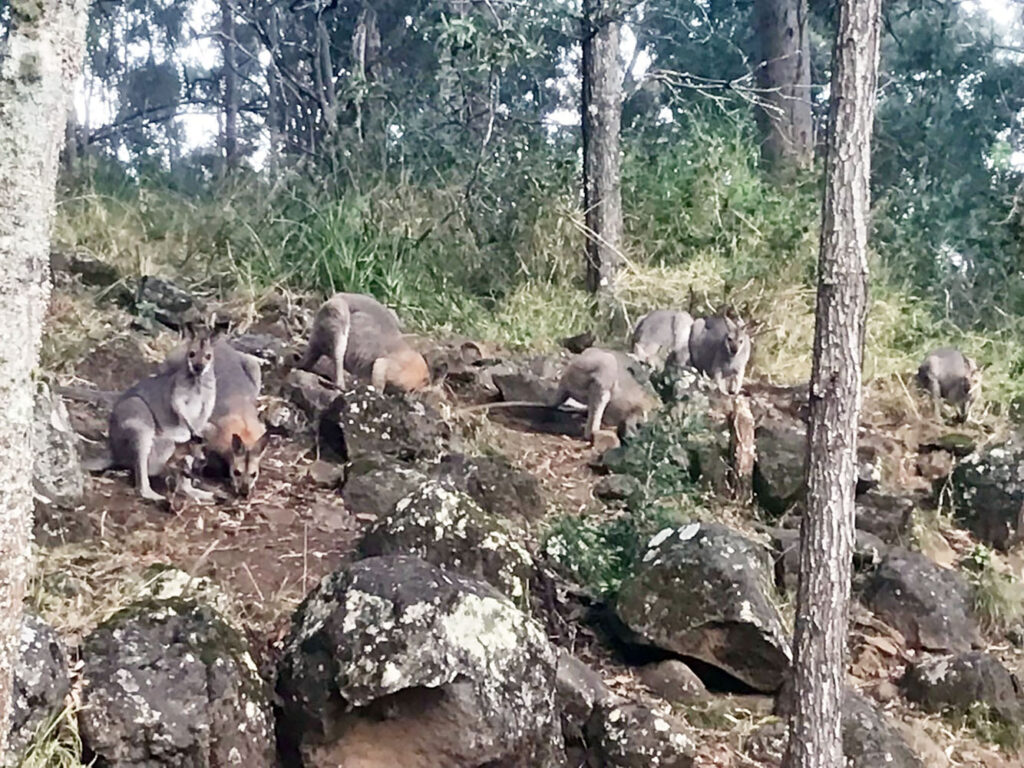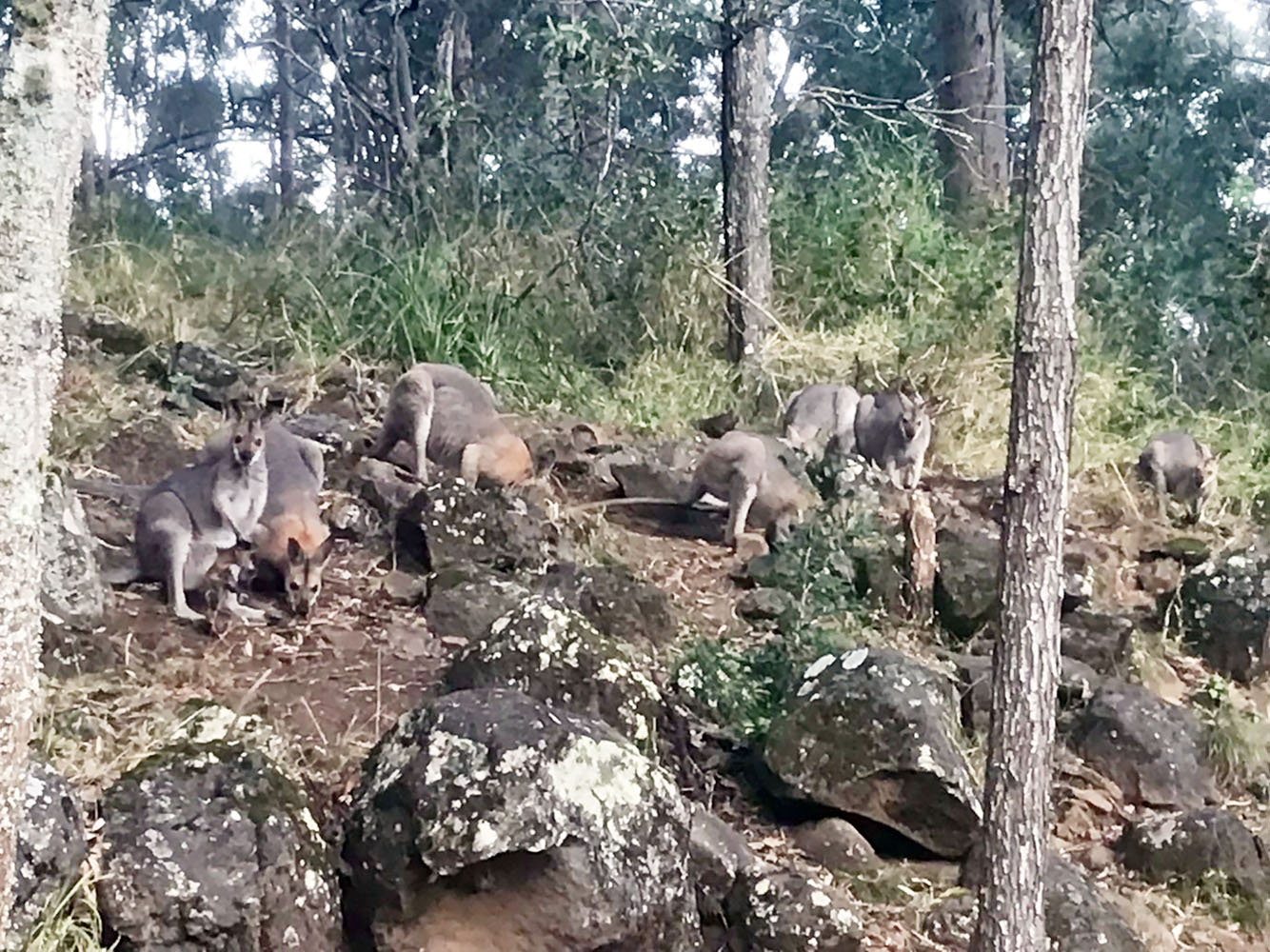“No Show Means It’s Going To Rain … ?!”
We are so blessed to have families of wallabies (which are referred to as “mobs”) venture down to the feeding area located immediately outside our kitchen window. The only time we don’t see them is when it is going to rain or storm which is very handy. I’ve dubbed that “Wally-dar” and it is accurate every time, more so than the weather forecast.
We feed them pony pellets and they love it. On shaking my little pink bucket of feed wallabies come from everywhere. It makes me feel like I am their “Mr Whippy”.
Wallabies are so adorable and very different to kangaroos, which I never knew. Kangaroos can be aggressive and have been known to injure or even kill people. Fortunately, because of the rocks around our place, the kangaroos don’t come here but they do congregate at the end of our street where there is a lot of flat, open grass. Aside from the behaviour, wallabies and kangaroos differ in height and weight: kangaroos can grow as tall as 2 metres and weigh over 90kg whilst our little bush or rock wallabies usually weigh less than 20kg and are usually under a metre tall. There is one exception being the wallaby the locals call “Big Boy” for obvious reasons. He is at least 2 metres tall with a very broad chest and thick tail and yet he is still a wallaby.
Other differences I have discovered are that kangaroos have more height between their knees and ankles making their legs seem disproportionately sized for their body whereas wallabies have compact legs, built for agility when moving across the rocky terrain. Also, wallabies have 3 different colours in their coats whilst kangaroos are a dull grey generally. Wallabies have flat teeth for eating forest habitat whilst kangaroos have curved teeth to eat grass.
Hubby calls them our “Kayo” as we can spend a lot of time just watching them through our kitchen window without having to pay for a streaming service. The joeys are adorable when they peak out from their mothers’ pouches and sometimes eat the pellets with their mothers. I have read that joeys can stay in the pouch for up to a year or until the next joey is born although they could (if they choose) be independent by 9 months. I would guess it is the male joey that stays in the pouch the longest as when they do become independent, they fight the existing male joey to remain in the mob otherwise they are outcast. Nature can be so cruel, but we feed the outcasts separately when they are brave enough to venture down. There is also a fabulous water bowl which is attached to our spare water tank and, by using a toilet cistern float valve, is permanently full. Despite the free-flowing creeks, the wallabies do prefer to drink from the bowl.

Stay tuned for the next edition: Creeks Flowing Through The Property
By Vanessa Rhind (Tamborine Resident)
